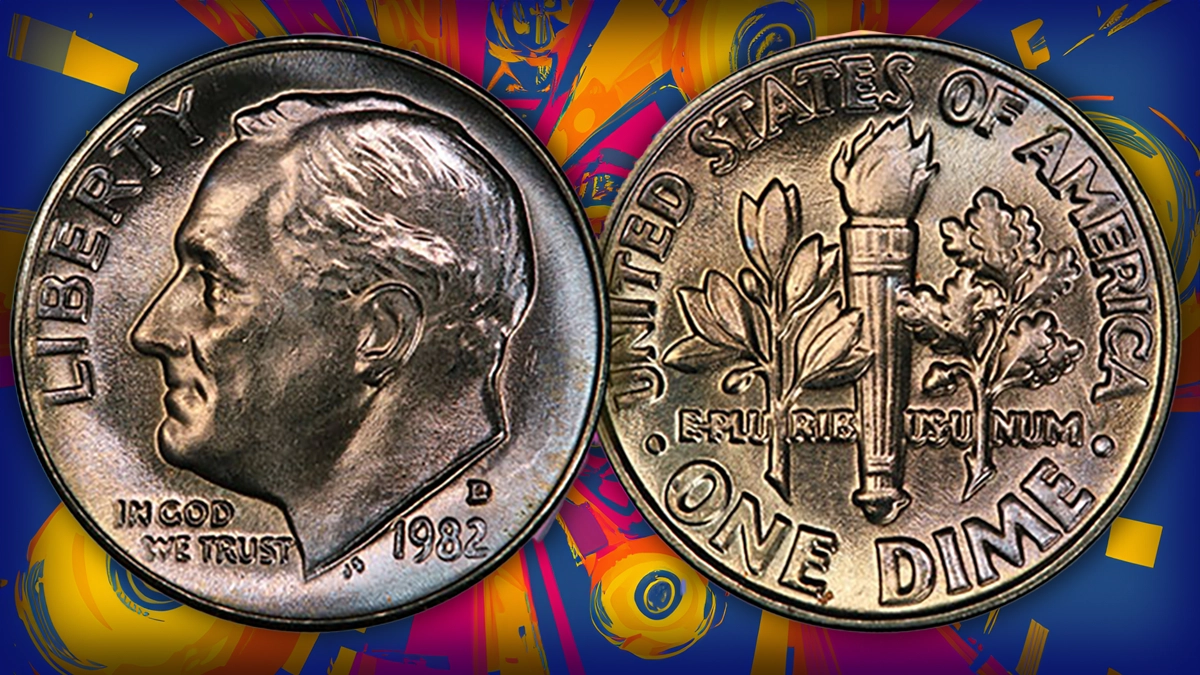
By Charles Morgan and Hubert Walker for CoinWeek Notes ….
President Franklin Delano Roosevelt’s portrait on the dime was fitting in 1946.
He was a revered figure for many of the “Greatest Generation”: those who lived through the Great Depression (1929-39) and prevailed in World War II (1939-45). Though his Administration was not without criticism (numismatists might lament his 1933 Executive Order 6102 that mandated the recall and melting of countless gold coins), he nonetheless enjoyed great popularity both in this country and abroad and was the nation’s only four-term president.
After Roosevelt died in office, the mourning of the nation gave impetus to honoring him on a circulating coin.
It is commonly accepted that Roosevelt had been afflicted by polio, though that diagnosis has been called into question by recent research. Because the March of Dimes, which funded polio care and research, started during Roosevelt’s first term in office, matching the dime to Roosevelt made sense.
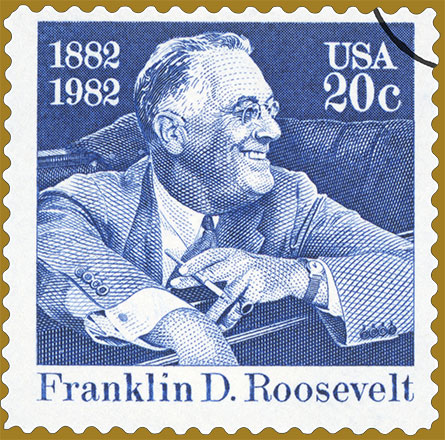 Ninety percent silver Roosevelt dimes were manufactured from 1946 through 1964. The continual rise in the price of silver bullion in the early ’60s caused the United States Mint to replace the silver in all circulating coins with a copper-nickel clad composition, effective with 1965-dated coins.
Ninety percent silver Roosevelt dimes were manufactured from 1946 through 1964. The continual rise in the price of silver bullion in the early ’60s caused the United States Mint to replace the silver in all circulating coins with a copper-nickel clad composition, effective with 1965-dated coins.
Business strike clad Roosevelt dimes have been minted in Philadelphia every year starting in 1965 and in Denver every year since 1968. San Francisco has produced clad Proofs since 1968 and both clad and silver Proofs since 1992. No Proofs were minted in 1965, 1966, and 1967, though Special Mint Sets with those dates were produced. The coins for these sets were specially prepared, but the quality of the finish is somewhere between Proof and a regular business strike.
Dimes from 1965 through 1967 display no mint mark; Denver (D) and San Francisco (S) mint marks from 1968 forward are placed on the obverse above the final digit of the date. Philadelphia dimes since 1980 have carried a P mint mark, and a W mint mark dime (for the West Point Mint) was issued in 1996. The P and W mintmarks also appear above the last date digit.
Nearly all clad Roosevelt dimes are affordable. Circulation strikes with FB designation (Full Bands, the bands on the torch) and Cameo/Deep Cameo Special Mint Set coins from 1965 through 1967 are priced two to 10 (or more) times higher than coins without those distinctions. Coins with additional price premiums are the No Mintmark issues: the 1982 circulation strike and the 1968, 1970, and 1983 Proofs. Prooflike circulation strikes are also listed in census/population reports.
The 1982 issue marked the centennial of Roosevelt’s birth.
The Non-Mint Set Years: 1982-1983
Roll hoarders and coin dealers saved 1982 and 1983 Mint output because of the discontinuation of Mint Sets for these two years. And while collector enthusiasm for clad issues has never truly taken off, the clad issues of 1982 and 1983 do not have a backstop of a million or so United States Mint Sets to help collectors fill holes.
Adding complexity to the equation, most coins struck for circulation during this period were struck with overused dies and lack the visual “pop” of Mint Set coins.
The 1982-D dime was saved in higher numbers than its Philadelphia Mint counterpart, and because of this, the issue sells for only a slight premium over the price of other raw uncirculated dimes of the 1970s to early 1980s period.
The Market for the 1982-D Dime
For many classic coin series, reviewing the population reports from NGC and PCGS can provide a fairly deep insight into the availability of Mint State examples. Naturally, one has to look at the current data and understand a few caveats.
One is that coins may cross over from one company to the other without being deleted from the census data. It is not unusual for the same coin to appear in both companies’ datasets as there is no reporting requirement for cert number deletion on the part of dealers, collectors, or the competing service. Although it is possible that this has occurred with the 1982-D Roosevelt dime, we believe that this is unlikely to any serious degree given the coin’s market activity.
Two, coins in certified holders are sometimes upgraded. If a coin is sent in for reconsideration (a process where it stays in its existing holder unless it upgrades) and warrants an upgrade, the services will typically delete the old cert number and change the population report to align with its new grade. If the coin is cracked out and resubmitted as a raw coin and upgraded, the coin will possibly be represented in the census data in two places: at the grade that was previously assigned to it and at the grade it is assigned now. In this situation, where the over-reporting is most acute, it is in grades just below grades, where the coin’s market value is dramatically higher. An “in-between” coin that might push to that next lucrative grade might be submitted several times, hoping it will eventually upgrade. This game wouldn’t be played if it didn’t occasionally work. In the process, the data a collector or dealer has to go by is muddied. Again, with the 1982-D Roosevelt dime, we do not see evidence of this up to this point.
Third, certified populations offer more limited insights for a modern coin series, especially one where the value of most examples in most grades is low or equal to or less than the cost of submission. Such is the case with the 1982-D Roosevelt dime. Let’s take a quick look at our April 2024 updated chart the combined populations of all coins (Mint State coins and Mint State coins with Full Torch/Full Bands designations).
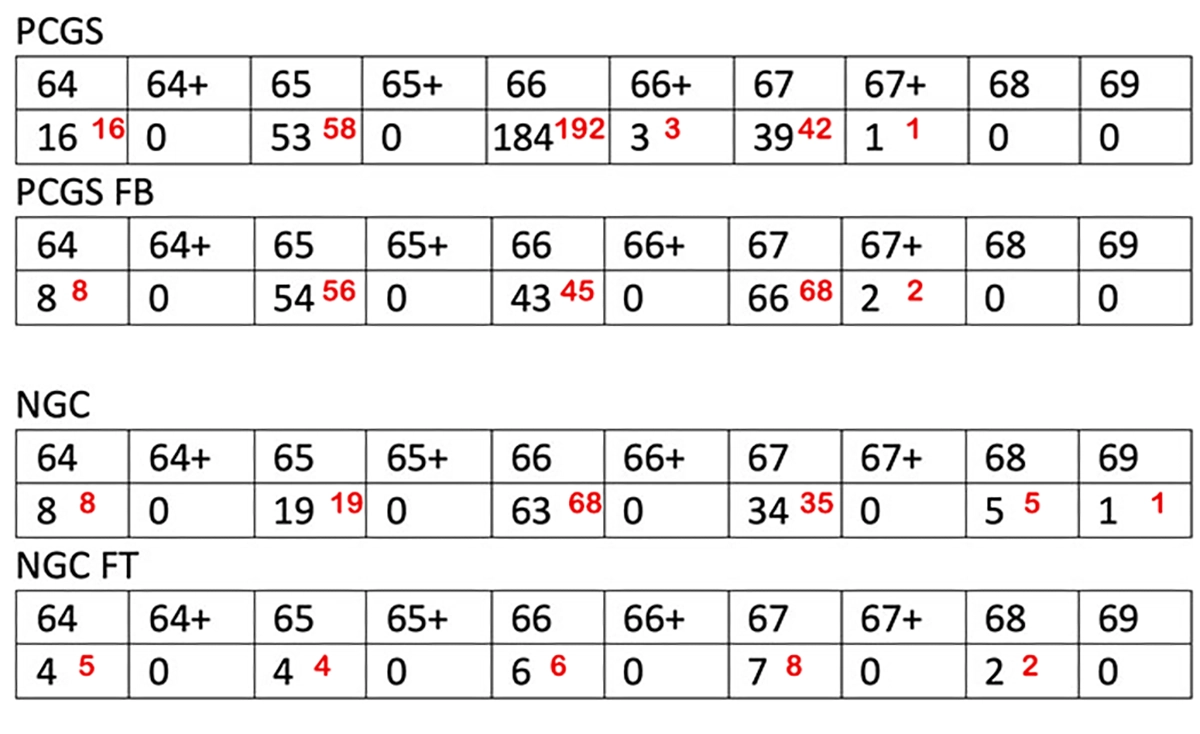
We can make two assumptions when evaluating the 1982-D Roosevelt dime population data.
The first is that only a fraction of the total number of Mint State coins for this issue has been submitted for grading. PCGS’s mathematical formula suggests a survival rate of over 400,000 pieces in Mint State. This is an imprecise number, but there is no way to truly gauge the number of coins in the marketplace, collections, rolls, and Federal Reserve Bank holdings. That said, it is very likely that several hundred thousand examples from the mintage of over 542 million survive in Mint State and will continue to survive for decades, if not a century or more.
The second assumption that we can make is that the majority of the coins submitted for encapsulation were picked for quality by their submitters with a desire that the coins would earn the FB or FT designation and grade MS66 or better.
Why MS66? MS66 represents the lowest grade in the census where a coin will likely sell for a profit. Coins graded lower have an expected retail value that is less than the cost of acquisition of the coin plus the cost of certification. Typically, the sellers succeeded in pre-screening coins at the MS66 level. Infrequently, these coins were struck well enough to earn the FB or FT designations. And less frequently, submitters put forward coins that would earn the Superb Gem grade of MS67. PCGS graded no example finer than MS67+, while NGC certified seven (five without and two with the FT designation) and one nearly perfect example in the grade MS69.
How Stable Is the Data?
Modern coin populations balloon after high-profit-triggering events, but only if the relevant material is easily available on the secondary market. After a 1995-W American Silver Eagle graded PR70DCAM by PCGS brought $86,654 at an April 2013 auction, the floodgates opened, and dealers and wholesalers across the country raced to submit 1995-W silver eagles in hopes of fast and easy profits until the tide rolled out. At the 2013 sale, the certified population of the coin at the PR70DCAM level was just eight pieces. The buyer, identified only as an East Coast collector, had purchased a coin and a ticking time bomb. Today, PCGS has graded 501 examples at the PR70DCAM level, and one can easily be had today for less than $14,000.
The 1982-D Roosevelt dime is not the 1995-W Silver Eagle. It is not widely considered a great modern rarity, and it does not come from a special set with an original price of $999, which kept it elusive for most series collectors. It was a common circulating coin that is notable because the Mint did not issue Uncirculated Coin Sets in 1982.
To this point, the data is neither stable nor unstable. It is dead in the water with very little submitter interest. This should cause a Klieg light to flash in the eyes of a would-be investor. It’s not that the coins are elusive; it’s the collector or dealer willing to invest in grading them. When record prices for this common issue start to creep up, expect that to change. Specialist collectors wishing to build a high-end registry set should attempt to make their own (i.e., grade their own) conditional rarities for this issue. In the long run, it will prove to be a better play.
* * *
How Much Is the 1982-D Roosevelt Dime Worth?
As a raw coin in Mint State, the 1982-D dime sells for between $2 and $3. Examples offered on eBay with higher-quality photographs may trade for $6 to $8 each. We rate this coin as slightly more abundant than the 1982-P, which sometimes sells for a dollar or two more.
Once certified, the market for the 1982-D dime changes dramatically. At the MS65 level, the coin is a loser. The typical example brings $15 or less, less than the submission cost. For collectors of modern certified coins, it is always an awkward position to hold a coin that is graded lower than the majority of coins graded as these coins provide no benefit in the Set Registry competition.
At MS66, the typical certified grade, coins bring $15 to $20. Few examples have been offered recently with Full Bands or Full Torch. PCGS CoinFacts suggests a retail value of $135, but we have been unable to source auction data for recent sales to support this number.
At MS67, coins without Full Bands or Full Torch Designations trade for $80-$100. With Full Bands or Torch designations, a major price discrepancy exists between the two grading services. A December 2014 Heritage sale of an NGC MS67FT saw a price with Buyer’s Premium at $117.50, while an April 2014 sale of a PCGS MS67FB saw a record price of $1,410. Was there truly a substantial quality difference between the two pieces? We haven’t seen either in hand, so we cannot say.
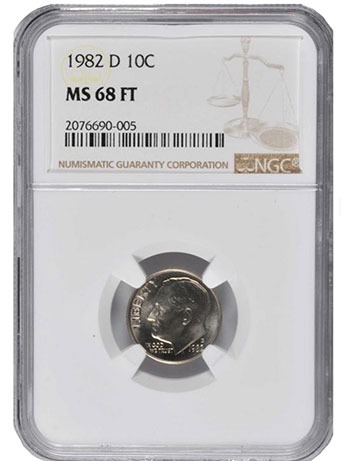
Would the NGC MS68FT coins bring PCGS MS67FB money at auction? Presumably, but too little data exists on either side of the ledger to draw concrete conclusions. In August 2018, Stack’s Bowers auctioned one, which brought $1,140. At the time, the coin was a pop 1, the finest known for the date and designation. Today, it is a pop-two coin with none finer. The second coin sold at GreatCollections in July 2023 for less than half the previous sale’s price.
So, depending on the coin’s condition, one can say that a 1982-D Roosevelt dime can be worth as little as face value (for circulated pieces) to as much as $500 to $1,000+ for whichever service purports the coin to be the finest known. That’s quite a spread and tons of speculative investing potential for America’s most diminutive circulating coin.
* * *
Market Data and Noteworthy Specimens
Top Population: PCGS MS67+FB (1, 4/2024). NGC MS68FT (2, 4/2024), and CAC None Graded (0:0 stickered:graded, 4/2024).
- NGC MS68FT #4836040-002: GreatCollections, July 23, 2023, Lot 1397864 – $513.
- NGC MS68FT #2076690-005: Stack’s Bowers, August 17, 2018, Lot 3134 – $1,140. Brilliant. Diagonal hit across upper torch bands.
* * *
Design
Obverse:
A left-facing profile of Roosevelt occupies most of the obverse space. Inside the smooth rim in front of Roosevelt’s face is the word LIBERTY. IN GOD WE TRUST in smaller letters is positioned below the chin. The date 1982 is squeezed into the space inside the rim and beneath the neck truncation, to the right of the designer’s initials JS, which are just below and oriented parallel to the edge of the neckline. The mintmark “D” is located at the back of the head between the date and the truncation of Roosevelt’s neck.
Reverse:
Inside the reverse smooth rim, the words UNITED STATES OF AMERICA and (slightly larger letters) ONE DIME are completely encircled, separated by centered dots. In the center is a flaming torch flanked by an olive branch to the left and an oak branch to the right. Forming a horizontal line through the base of the torch and both branches is a partitioned E PLURIBUS UNUM, with centering dots separating the three Latin words.
Edge:
The edge of the 1982-D Roosevelt dime is reeded.
Designer
John R. Sinnock (1888-1947) served as the eighth Chief Engraver of the United States Mint from 1925 through his death on May 14, 1947. He is responsible for the design of both the Roosevelt dime and the Franklin half dollar.
Coin Specifications
| Country: | United States of America |
| Year Of Issue: | 1982 |
| Denomination: | 10 Cents (USD) |
| Mint Mark: | D (Denver) |
| Mintage: | 542,713,584 |
| Alloy: | 75% Copper, 25% Nickel |
| Weight: | 2.27 g |
| Diameter: | 17.90 mm |
| Edge: | Reeded |
| OBV Designer: | John R. Sinnock |
| REV Designer: | John R. Sinnock |
| Quality: | Business Strike |
* * *


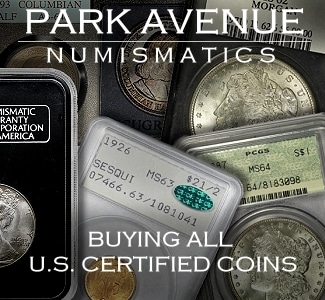
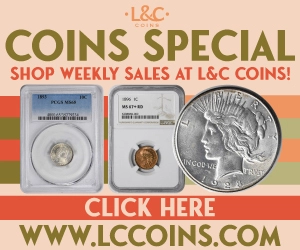
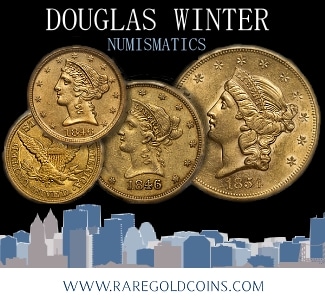
Minor erratum:
The headline and illustration refer to the Denver issue, but the Specifications section describes Philadelphia strikes.
The only mistake in the specifications section was the Philadelphia mint mark but that’s bad enough. Thanks for the catch.
The “Obverse” and “Edge” descriptions refer to the P mint mark as well.
I can blame my nit-pickery on years of grading college exams and reviewing technical documentation ;)
Ah… Clearly not on our A-game that day. Fixed it.
Today we’d. March 16th my wife found a 1982 D mint dime similar to one one we just read on up above real shiny can see all the engravings real clear the truth of the matter is we’re both naive on how to sell coins for the simple fact that everytime we try to we run into not having a credit card not really what a credit card has to do with selling rare coins to people who actually appreciate them